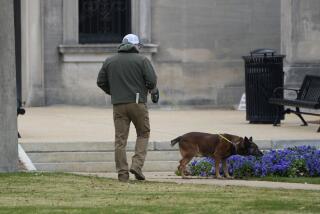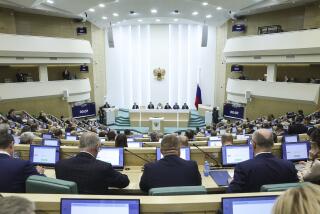Civilian Response to Attack Is Tested
- Share via
WASHINGTON — Twenty months since the Sept. 11 attacks and nearly that long since envelopes laced with anthrax arrived in Washington and New York, government agencies are trying to find out whether they are ready to respond to a terrorist attack.
For five days starting Monday in Seattle and at an undisclosed time this week in Chicago, authorities are running through a civilian version of war games to meet what are thought to be potential threats in the 21st century.
Just as military forces assemble tanks and troops to practice attack and defense, emergency crews and civilian officials are testing what an attack by terrorists employing biological or chemical weapons might demand, particularly of the local officials who would get the first calls.
“When a disaster occurs, people do not call the White House,” Seattle Mayor Greg Nickels said at a news conference, according to Associated Press. “They call 911.”
The scene in Seattle sounded convincing: Across an industrial lot, smashed cars, buses and other debris had been scattered, AP reported, suggesting what might confront emergency crews after the explosion of a “dirty” bomb spewed radioactivity.
Reuters news agency reported that hundreds of police, firefighters and emergency workers were being drawn into the drill, and that 8,500 people would take part around the country.
This was the scenario for the simulation, according to Reuters: About noon, two explosions and two fires sent plumes of acrid black smoke wafting above an open gravel pit south of downtown Seattle. Within three minutes, fire and emergency vehicles began arriving. The fires were extinguished within 22 minutes. But the smoke, carrying simulated radioactive particles, traveled for miles on a brisk wind -- setting off the initial phase in a series of events testing emergency responses.
The exercise follows a similar drill that took place three years ago, known as Topoff (for top officials) 1. The current practice is called Topoff 2.
The Department of Homeland Security said $16 million had been budgeted for the exercise, with $5 million going directly to Washington state and Illinois to pay for personnel and other costs.
Under the scenario prepared for the Chicago phase of the exercise, “patients” with flu-like symptoms will show up in hospitals in and around the city during coming days, apparently the result of a terrorist release of a deadly plague in an aerosol.
The Department of Homeland Security emphasized that the scenario was based on hypothetical conditions and was not intended to forecast “future terrorist-related events or activities.”
“Though the scenario is plausible, it does contain artificialities to ensure conformance with the specific training objectives of the participating federal, state and local agencies and the first responders at the exercise venues,” the department said.
More to Read
Sign up for Essential California
The most important California stories and recommendations in your inbox every morning.
You may occasionally receive promotional content from the Los Angeles Times.













